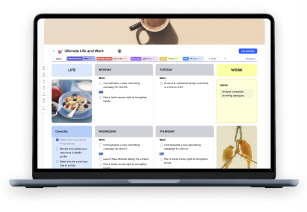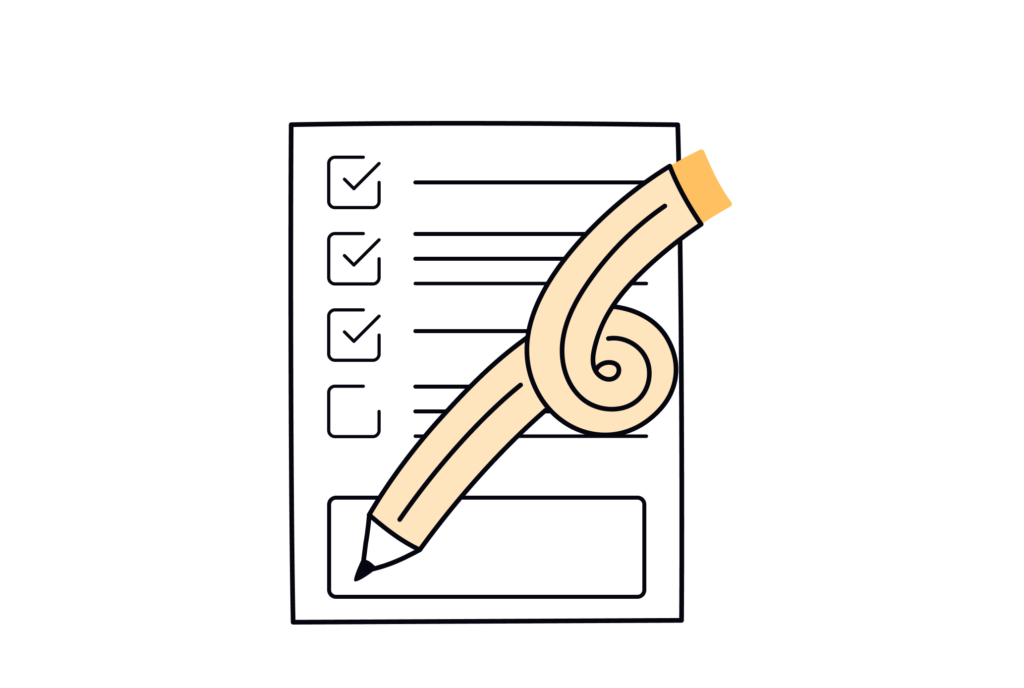How to plan your trip successfully isn’t a secret those who travel regularly hide. However, there are some tricks and tips to get everything done quicker and easier whether you’re a homebody and this will be something new to you or a tough nomad.
Have you ever given up on your trip only because, in the stage of planning, it seemed too difficult to manage? How many trips were ruined because the planning was too much of a bother? Probably, more than those that did come true. In a world where you can get from point A to point B in a few hours and at a low price, it’s an unforgivable mishap not to travel.
How many white zones are on your personal map? Have you ever been to the closest neighboring country? Why not try? Let’s plan your next trip stress-free.
How to plan a trip on your own

Generally speaking, there are two basic approaches to planning a trip. The first one – you get your tickets and rely on your luck and improvisation. Obviously, many people use this approach. Many keep traveling for years without planning a single detail. However, when it’s your first time leaving your country, or when you simply don’t feel comfortable not knowing where you’re going to sleep tonight, or if you’re heading somewhere interesting yet not entirely safe, then having a plan is necessary. So, let’s see how to plan a trip that will do what it is supposed to do – bring your peace, relaxation, rest, and new emotions without stress and headache.
We offer you a little shortcut for your planning – the xTiles Trip Planner Template. We gather there the most important things you need to arrange before you depart. Whether you want to know how to plan a trip to Europe or how to plan a trip to Hawaii, Disney World, etc., this guide will come in handy.
1. Choose where you want to go

When planning your trip, you may go two ways. You may define your budget and only then choose where you want to go. Or you may decide where you want to visit and then manage your budget. Surely, the first option allows you to set on a trip immediately if you have at least some money. However, will it be a trip you want or only any trip for the trip’s sake? That’s why we offer you to decide where you want to go first, even if you will need to wait a bit while saving money.
At this stage, you don’t necessarily need to be super specific about the place. You may choose a country or a region. However, if money does not impact your destination, you may jump straight to where you strive to visit.
It will be nice to come up with at least a few options. In case some won’t work out, you can always switch to something different without going back to research.
Different cities look and feel different given the time of the year. This rule doesn’t concern landscapes or architecture but mostly the crowd and lines of other tourists. So, you may try to find something where the calm season matches your vacation times. For example, northern European cities like Brussels are usually pretty deserted in mid-summer because citizens usually go south to spend their vacations in Spain or Italy.
Another option to admire new places on your own is to go somewhere people still haven’t discovered. For example, Slovakia and Slovenia have as much to offer you as any other part of the Old Continent, yet crowds of tourists haven’t gotten there yet.
Maybe you already have a Bucket List with all the countries you want to visit. Then we suggest you follow it and not abandon your dreams.
2. Decide how much you’re willing to spend on your trip
This part is super important. It is likely to define the whole trip. However, if you research the countries in your list after the first step, you probably already know how much money you will need. Some are significantly cheaper than others, especially if they stay unknown to the majority of tourists.
If you’re all about planning your trip thoroughly, it’s likely that before you plan every detail and depart, it will pass some time because you will need to save some money. While saving the needed amount of money, you may create a mood board about your journey for inspiration.
Trips with no return ticket also require a plan to follow while traveling. You need to have an income to spend as much time abroad as you want with the ability to move from one place to another. How is that possible? There are a few options. You spent your life preparing for this trip, and now you don’t have to worry about money, or you take different jobs or work remotely at your current position while traveling and keep saving as usual. Additionally, you may take a volunteer job in exchange for room and board.
It’s important to have a money cushion if you’re far from home with no one to help you, just in case. You may calculate your budget right in the xTiles Trip Planner Template. You will see your planned activities and accommodation expenses right there, so you won’t need to switch between different documents or files.
3. Decide what kind of trip it will be
A week-long trip to Europe? A long-term traveling all over the world with no certain destination? How long you can continue to travel will depend on your travel budget. That’s why the budget step is so important for planning your trip.
The xTiles Trip Planner Template is designed for a six-day trip. However, you’re free to extend or shorten it depending on your needs. Also, if there’s going to be a trip with multiple destinations, you may make a few planners for each of them.
Also, do you want a solo trip, or will someone go with you? The answer to this question will define your trip hugely because not all places are suitable for family vacations, and not all places are suitable for solo travelers.
When you’re alone or with only one partner, you’re more mobile. Also, it will be easier to plan your trip for one or two people than for a whole family, trying to make everyone comfortable the whole time.
4. Book your tickets

Many a time, people who are wondering how to plan a trip start with this step. Today, cheap and available airline tickets are notoriously known even for those who have never left their country. What? Paris for only $30? For many, they were the main reason to start traveling in the first place. But there’s a huge pitfall.
Cheap tickets are important, but they don’t mean all. You may simply not have enough money to spend a week in a city you fly to at a low price. Don’t fool yourself with low prices on tickets because there might be other expenses that hugely prevail over what you saved.
5. Take care of your accommodation

Depending on how much time you will spend traveling, you may choose to book your accommodation in advance or arrange everything on-site. Naturally, the shortest your trip is going to be, the less time you have for managing different issues, or at least your time is too precious to look for suitable hotels, hostels, places to visit, etc.
Decide where you would like to stay – in the city center or somewhere on its outskirts if you prefer calm neighborhoods to places known for their nightlife. However, take into consideration that if you stay far from interesting places, there better be a convenient public transportation system, so you can get whenever you want without trouble.
Getting acknowledged with the local transportation opportunities is always a great idea, even if you have no plans of using any of them. For instance, most European cities are pretty walkable, but there might be many other interesting places just a few hours from where you stay. That’s one of the greatest advantages of traveling around Europe – you can see so much of everything in a short period of time. If you want to visit other cities or towns, you still will need to know how you can get to your destination.
Depending on where you’re going, you may use different booking resources. For example, the best ways to find a great place to stay in Europe are:
The same resources are suitable for searching for accommodation in South and Central America. If you’re looking for a place to stay in the USA:
- Airbnb is your best option.
At least so far, hostels aren’t as popular in the US as they are in Europe. For those heading to Asia, we suggest using:
Unfortunately, Airbnb isn’t available in all Asian countries. For example, due to the Zero-Covid tolerance policy and cultural and market differences, Airbnb was ousted from China.
In step two, we’ve already mentioned cheap or free accommodation in exchange for your work or help. You may try to find a place to spend some time on an organic farm as a volunteer via WWOOF. Another option for budget travelers is WorkAway. The service is available in 170 countries, so you’re free to go almost anywhere you want.
Also, we believe we must mention CouchSurfing, even though it’s widely known even among those who have never used it. It is a worldwide community with over 14 million followers who help each other by providing free accommodation.
6. Research what you will do/see/visit once you’re there

Finally, we got to the fun part. Now you need to research things to do and see. Generally, you need to do what you did at the beginning, but this time you will need to be very specific about what you choose.
First, think about what you have always wanted to see. These definitely should be the places you visit first. Then you need to check for everything worth your attention so that you won’t miss any opportunities. Where to find inspiration for your journey destinations?
- Bloggers.
Do you follow any travel bloggers? If yes, you may check their content about the city you’re going to visit. Many of them also have vlogs, so you can see for yourself whether the place is worth visiting or not. The best part is that you will also get many suggestions on how to save money in the current city, where to find authentic places, great cuisine, interesting activities, etc.
- Google.
This is obvious, yet Google has much to offer you when looking for great places to visit. You may try searching for pictures, just to see what interesting things there might be. Also, you may plan a trip with google maps, checking where the needed places and objects are. Google will help you to find the best transportation and calculate how much time you will need to get there.
Some also suggest using Pinterest for great traveling ideas, but it will be longer than if you go straight to Google. Unfortunately, Pinterest is all about visuality (and we love it for that), so it might be hard to find detailed information about the place you see. Many times you will need to download the picture and then use Google search to find more information.
You may also try the xTiles Web Clipper to save all the interesting places you may need to consider later. Just two clicks, and you can continue your search without interruption and go back to what you saved later.
- Trip Advisor
On TripAdvisor, you will find lots of facts and interesting and helpful suggestions from people who travel regularly. That’s why if you’re a neophyte, you may get stuck here for some time checking everything that might be useful during your trip. The best thing is that you may check different people’s suggestions and reviews and have your own opinion based on many thoughts.
7 Get your travel insurance

Now we’re back to the boring parts, but we need to do it. Accidents might happen when you least expect them, and it’s preferable to be covered whenever you go. If you follow travel bloggers or regularly read TripAdvisor, you know that almost every traveler recommends getting insurance whenever you are set on a journey.
Your regular insurance may cover your unexpected traveling expenses. However, some companies specialize in travel insurance solely. Probably, the most popular, i.e., tested by thousands and thousands of travelers before you, is World Nomads, available for residents from many countries. Unlike many insurance companies, this one also covers extreme adventure activities. The price may vary depending on your age, country of residence, and country of destination. For example, for the insurance for a week’s trip to Nepal, the USA resident will pay $75 – $122, depending on the plan they choose.
If you’re not trekking to Everest Base Camp, just aimlessly wandering around small European streets, you can try other insurance.
8 Pack

We’re closer and closer to the point where you depart. Packing for many is quite troublesome. That’s why we recommend starting this part at least a few days before the due date. You may use the xTiles Packing List Template not to forget anything.
The list of essential things you must bring with you is pretty short:
- Your passport/identification card
- Credit cards and some currency
- Charges for your devices
- Medicaments if you need to take some regularly.
There are different life hacks to avoid packing too much stuff. Lay all the things you think you’re going to need during your trip on the ground or your bed. Then put aside half of it. Don’t take too many clothes if it’s going to be a short trip, especially if all you have is hand luggage. The space in your backpack is too precious to be wasted on another pair of jeans. Also, leave some space for things you may buy while traveling.
If there’s no chance you can take fewer clothes with you, don’t worry. You may try to wrap your items tightly with food film. The bad news is the weight of your backpack will be the same, which might be a huge disadvantage if you will have to wander everywhere with it. The good news is that there will be some extra space in your bag now.
9. Prepare yourself for possible risks
Accidents happen all the time and everywhere, so let the possible risks not stop you from traveling the world. Besides, you already have your insurance. We have a quick guide on what you should take care of to minimize the risk that something might go wrong while you’re on a trip.
- Check where your country’s embassy is. Save it contact information.
- Get needed immunizations before going to countries whose climate and flora and fauna differ from yours. Get your Covid vaccination in any case because many travel insurance companies don’t provide coverage for Covid-19.
- Take care of your devices. Check whether you need an adapter for your electronic gadgets.
- Scan your documents and email them yourself.
- Warn your bank you’re going abroad, so it won’t block your cards due to suspicious activity. Also, check what they offer you for using your regular cards abroad.
- Prepare currency because not everywhere you will be able to use credit cards.
- Secure your belongings. The most important thing should be stored in pockets with zippers or where it will be hard to get.
- Learn what methods local scammers use to trick tourists.
- Have backup credit cards and currency, just in case.
10. Last preparations

We’re almost ready. What now? You did an amazing job planning a trip and packing your suitcases. Now that almost everything is ready, you have time to check and double-check everything.
- Make sure you will have access to the Internet while you’re traveling. You may purchase a local SIM card once you land.
- Learn at least a few words in the local language.
- Check cultural differences, especially if you’re going far from your part of the world, so your behavior won’t be considered foolish or offensive.
- Download apps that will help you deal with unknown information.
- Google Maps or any other map apps that work offline.
- Translator because not everyone can speak English.
- An app to convert local currency to the one you’re familiar with, so you can track how much you actually spend.
Summing Up
Going on a journey might be intimidating, but nothing should stop you from discovering new places and gaining new experiences. We hope our guide and our templates will ease your preparation at least a bit because every trip is definitely worth the time and effort you put into it while getting ready.







